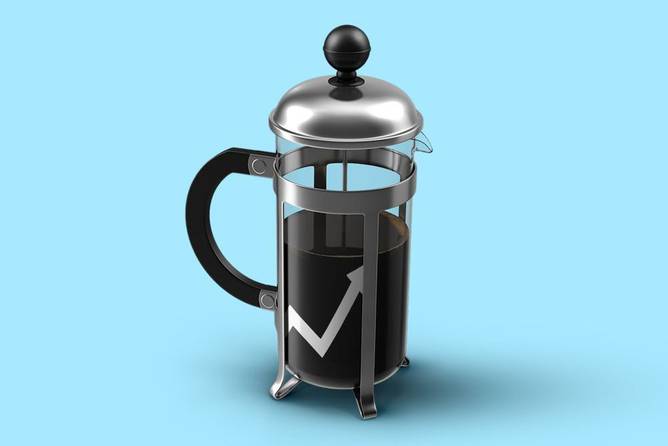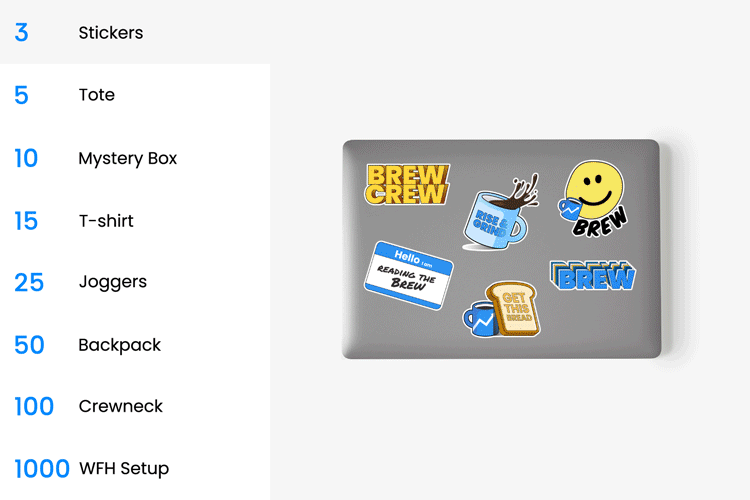It’s Wednesday. Psst, marketers. Did you know you could be elevating customer loyalty by understanding the psychology of their decision-making?
See how you can leverage social psych, behavioral economics, and decision biases to build stronger marketing campaigns at Marigold’s free webinar. Register now!
In today’s edition:
—Katie Hicks, Ryan Barwick, Erin Cabrey
|
|
Jay Livingston
Before there were burgers in Jay Livingston’s life, there were bankers and boxes.
Prior to his job as CMO of Shake Shack, Livingston began his career at Bank of America, where he worked in marketing for more than 20 years. When he was searching for his next role, Livingston told us he was looking for three things: a “consumer-facing brand that makes a physical product that brings people joy.” That led him to become the CMO of Bark, which oversees BarkBox, where he remained for almost two years before joining Shake Shack.
Now, with nearly five years under his belt at the fast-casual chain, Livingston said he’s proud of the work he and his team have done to build out the brand’s social presence, PR strategy, and in-house design. Under his leadership, the brand has also developed its digital strategy, expanded in-app delivery, and collaborated with brands like Studs and Hot Ones.
Livingston told us he’s looking to tell Shake Shack’s story “bigger and more broadly” outside New York City, where the restaurant chain originated, through more brand partnerships and mass media, including the brand’s first-ever TV spot, which began airing last year.
“We’re starting to get the financial means to do really interesting things,” he said. “That’s the most fun stage of growth.”
Continue reading here.—KH
|
|
PRESENTED BY AMERICAN EXPRESS BUSINESS
|
The enhanced American Express® Business Gold Card is designed to take your business further.
It’s packed with benefits, like 4X Membership Rewards® points that automatically adapt to your top 2 eligible spending categories every month, on up to $150k in purchases per year.
Plus, you can also earn up to $395 in annual statement credits on eligible business purchases at select shipping, food delivery, and retail subscription merchants.
And with flexible spending capacity that adapts to your business and access to 24/7 support from a business Card specialist, you can continue to run your business with confidence.
The Amex® Business Gold Card, now smarter and more flexible. That’s the powerful backing of American Express.
Enrollment required. Terms apply. Learn more here.
|
|
Francis Scialabba
The Association of National Advertisers (ANA) today released the rest of its programmatic supply-chain transparency report, just in time for annual performance reviews holiday parties.
The big takeaway: The group’s audit of an estimated $88 billion in open web programmatic advertising spend found that only 36% of ad spending on demand-side platforms (DSP) actually reached advertisers’ “intended audiences.” Not great, Bob!
Other findings include:
- 29% of every ad dollar went toward fees for DSP and supply-side platforms (SSP), aka the adtech vendors that support the pipes of programmatic advertising.
- 35% of every dollar was spent on either nonviewable, non-measurable, or made-for-advertising inventory, or on nonhuman, bot traffic (!).
The research: The study examined $123 million in ad spend and 35.5 billion ad impressions between September 2022 and January 2023 from 21 brands, including Nissan, Discover, Walgreens, and State Farm. Forty-six other brands were interested in participating in the study, the ANA said, but were unable to either clear legal hurdles, or get log data from their adtech partners in the first place.
The first half of the research, which was released in June, revealed that 23% of programmatic advertising dollars went toward made-for-advertising websites, which are typically clickbait designed specifically to attract ad dollars. The new report walks back those claims slightly, and adjusts that figure to 15%, or about $10 billion in media investment. The first iteration of the report prompted several adtech vendors to update their policies regarding clickbait inventory.
What to do about it: The report suggests that media buyers prioritize inclusion lists over exclusion lists and have direct contracts at every step of the adtech supply chain, from DSP to SSP to verification vendors.—RB
|
|
Ucg/Getty Images
As consumers flock to grocery stores during the holidays to stock up for festive gatherings, they’ve historically reached for their favorite name-brand products. But this holiday, with inflated prices and new retailer innovations, private-label products might start to give them a run for their money.
NielsenIQ predicts US private label dollar share of US CPG to increase to 19.6% in Q4, up from 19.3% in 2022 and 18.4% in 2021. This trend comes as 27% of survey respondents said they plan to buy more private label products to save $$ this holiday season and 40% of consumers view private label products as being of higher or equal quality compared to name brands.
Private labels have seen a strong year, with dollar sales across all US retailers growing 8.2% to $108 billion in the first six months of 2023, according to the Private Label Manufacturers Association and research firm Circana. While they have yet to outperform name brands during major holidays, private labels could have a “fierce moment,” to end the year, Lauren Fernandes, director of global thought leadership at NielsenIQ, told Retail Brew.
Brand new: The consumer price index in October was up 3.2% YoY, with CPG products at 3.1%, per NielsenIQ. However, prices for center-store items—things like canned goods, spices, and baking products—are even more elevated at 5%, Carman Allison, VP of global thought leadership North America of NielsenIQ, noted. Those are a lot of items consumers use during the holiday season, and are “highly substitutable” (i.e., holiday guests probably won’t notice a difference), Fernandes said, so consumers may opt for more private-label center store items this month.
Read more on Retail Brew.—EC
|
|
Morning Brew
There are a lot of bad marketing tips out there. These aren’t those.
Trend-setting: All the Gen Z-led trends that will dominate 2024, according to Instagram.
Measure up: Key TikTok metrics to keep an eye on.
Cold one: Remember the Bud light backlash from earlier this year? Here’s how the “fiasco” changed the beer industry’s approach to advertising, per Ad Age.
Conquer the creator economy: Finding the right social platform and influencer is key to reaching your performance marketing goals. Rakuten Advertising’s newest e-book has all the insights you need to hit the ground running. Download it.* *A message from our sponsor.
|
|
Stat: 17%. That’s how much Spotify is reducing its workforce, it announced this week, as part of a “strategic reorientation.”
Quote: “I don’t know what kind of lobotomy they get in advertising school, but they find bits of pop culture or art that has a soul, and they either try to get the artists themselves to collaborate with them, and if they can’t, then they get someone to imitate it and rip the heart out of whatever the art was.”—John Wilson, of the HBO Series How to with John Wilson, talking to GQ about how working in the ad industry “radicalized” him
Read: The first installment of Digiday’s history of ad tech series.
|
|
ADVERTISE
//
CAREERS
//
SHOP
//
FAQ
Update your email preferences or unsubscribe
here.
View our privacy policy
here.
Copyright ©
2023
Morning Brew. All rights reserved.
22 W 19th St, 4th Floor, New York, NY 10011
|
|








